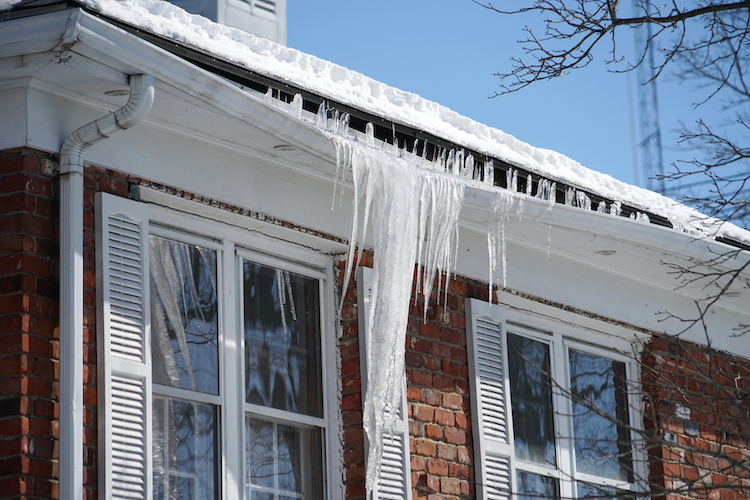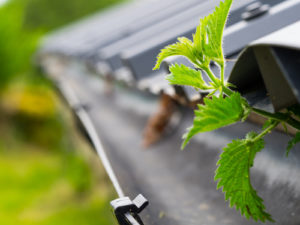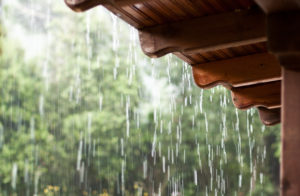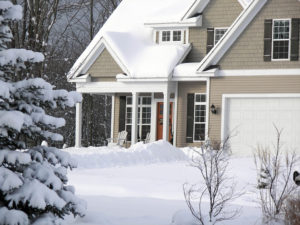Whether you’ve called the Heartland home for years or months, you know that our winters are relatively mild compared to other parts of the country. While our temperatures occasionally dip below freezing and we have a couple of snowfalls on average each year, our winters aren’t that harsh.
With that said, we do experience winter weather, albeit more ice than snow. Some days from November-February call for frigid temperatures, snow, and of course, freezing rain and ice storms. Ice storms can sometimes be more dangerous than snowstorms; roads become extra slick, our homes get covered in a layer of ice, and walkways and driveways are impossible to walk on. This winter is no exception – The Farmer’s Almanac is predicting below-average temperatures. When temperatures dip below freezing and precipitation is in the air, it’s a recipe for ice.
Ice wreaks havoc on our homes, causing all sorts of issues. From weighing down trees that can split and fall near and on our homes to causing foundation damage, ice is an extremely dangerous winter weather threat. According to FEMA, ice weighs significantly more than snow – 57 pounds per square foot compared to 3-21 pounds per square foot depending on how wet the snow is. Luckily, there are ways you can protect your home from ice. Keep reading to learn how to minimize ice damage this winter.
Trim Trees that are Close to Your Home
Most homeowners across the Heartland have large, dense trees like catalpas, oaks, and cedars on their property. While these threes are beautiful and provide shade to our homes in the sweltering summers, they can quickly become a threat to our homes, especially during wintertime. Some homes have trees that are so close to their roofs that the branches tickle the rooftop and drape over windows.
Trees that are close to the home can cause major damage if they become weighed down by ice. Branches can bust through windows and limbs can snap right off the tree and onto the roof, posing an immediate threat to your family’s safety. To avoid damage to your home caused by icy trees, be sure to keep the trees that are close to your home trimmed. An arborist can safely trim the trees so that they’re not too close to your home while maintaining the health of the tree.
Keep an Eye on Your Roof
Our roofs protect us from winter weather by blocking all forms of precipitation from entering our homes, keeping us dry and warm. Unfortunately, roofs can quickly become weighed down in the winter due to snow and ice resulting in leaks, cracks, and even weakening the structure of our homes. The ice of course weighs more than snow, posing more of a risk for roof damage.
To avoid extreme damage to your roof from ice this winter, keep an eye on it. Depending on the pitch and slope of your roof, it may accumulate more snow than others. If you notice a lot of snow that hasn’t melted or fallen from the roof combined with ice from a recent ice storm, you may want to contact a roofing professional to examine your roof. They can safely remove snow and ice, preventing damage from occurring.
Continually Remove Ice
If you let ice accumulate, the fluctuating temperatures will melt and refreeze meltwater on your home all winter long, resulting in ice that’s near impossible to remove. To keep up with ice and to help prevent damage, continually remove it whenever possible. Keep up with shoveling after each snowfall to reduce the risk of the snow melting and refreezing, resulting in a buildup of ice. The last thing you want is snow to accumulate on your driveway or walkways with a layer of ice from an ice storm. It can be extremely difficult to remove ice, so keeping up with it all winter long will be easier in the long run.
Clean Your Gutters
Ice is a major threat to a home’s gutter system. Unlike rain that easily flushes through a gutter system, ice accumulates in the gutters causing ice dams. These thick pieces of ice form as a result of heat produced from the inside of the house melting accumulated snow and ice, causing it to constantly melt and refreeze. Ice dams are a common issue for homeowners in the Heartland because of our fluctuating temperatures and ice storms.
Ice dams can cause gutters to sag and tear away from the home because of the weight of the heavy ice that’s left to accumulate in the gutter system. This can be avoided by keeping your half-round gutters clean to minimize clogs and allowing meltwater from snow and ice to flow through the gutters. If you do have ice dams, they can be removed by using a roof rake to remove ice, using a safe ice melt product, installing heat cables, or by calling a professional to remove them.
By keeping trees trimmed, an eye on your roof, cleaning your half-round gutter system, and continually removing ice, your home will be better protected from ice damage this winter. The threat of ice damage is real but can be minimized by following the steps above. Another way to prevent ice damage to your home and your gutter system is to install the K-Guard Leaf Free Gutter System.
K-Guard can make all the difference when it comes to ice storms. For one, our gutter system is so durable that it’ll never sag or tear away from the home due to heavy precipitation including ice. Next, the K-Guard Gutter System’s patented hood allows meltwater, snow, and ice to simply slide off of the hood rather than accumulating and creating ice dams. When ice and snow do melt from the roof, it’s able to simply enter the K-Guard Leaf Free Gutter System through a narrow opening that only allows water to enter the system, preventing clogs. You will never have to clean your gutters again when you install K-Guard!
To learn more about the K-Guard Leaf Free Gutter System, call (913) 380-1616 or request your free estimate online today. We proudly offer our gutter installation service to homeowners across both Missouri and Kansas including, but not limited to, the following locations: Kansas City, Overland Park, Topeka, Olathe, Shawnee, Independence, Lenexa, and Lee’s Summit.




